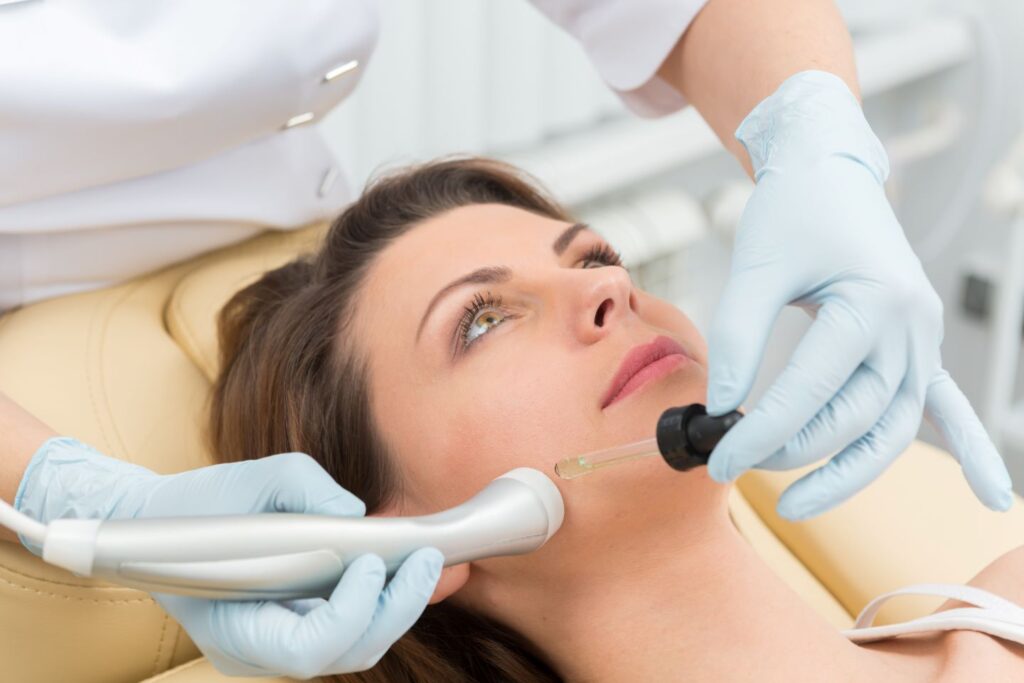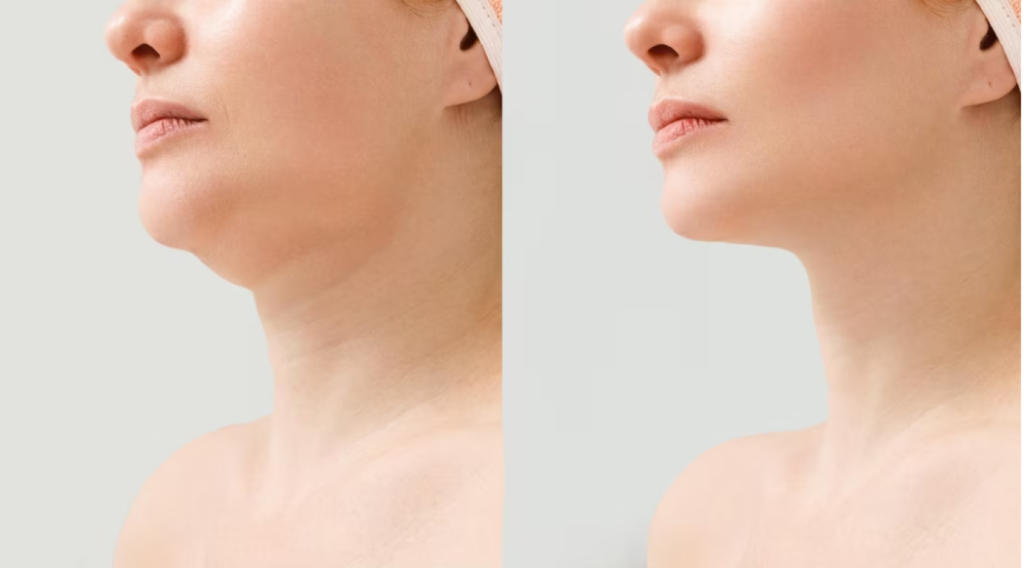Buccal Fat Removal Before and After: Precautions, Procedure and Recovery

What is Buccal Fat?
Buccal refers to the mouth, specifically the cheek area. On each cheek is a pad of fat known as the buccal fat pad. The size of these fat pads can vary from person to person and are a major factor in the overall fullness or roundness of the face. Now we will proceed for buccal fat removal before and after.
What is Buccal Fat Removal? An Extensive Guide
Buccal fat removal, a buccal lipectomy or cheek reduction surgery, is a cosmetic procedure designed to slim the cheeks and give the face a more contoured look.
In the buccal fat removal procedure, a surgeon removes some of this fat to reduce the prominence of the cheeks. The operation is typically performed through small incisions on the inside of the mouth, leading to no visible scarring.
The Role of Buccal Fat Pads
Buccal fat pads are pockets of fat that contribute to the roundness of the face. They are located in the middle of the cheeks, between the facial muscles, and extend down to the jawline area.
- The size and prominence of these fat pads can vary significantly from person to person and are largely determined by genetic factors. Some people naturally have larger buccal fat pads, which give the face a fuller or chubbier appearance. Other factors, such as body weight and age, can also influence the size of the buccal fat pads.
- In cosmetic surgery, buccal fat pads are often the focus of procedures designed to thin the face and create a more sculpted look. This is typically achieved through a procedure known as buccal fat removal, which involves making a small incision inside the mouth and removing part or all of the buccal fat pads. The result is a slimmer, more contoured facial appearance.

Buccal Fat Removal Before and After
For discussing before and after buccal fat removal, we will discuss the essential steps to follow before buccal fat removal, then discuss the process of buccal fat removal and then go for important steps for faster recovery after buccal fat removal.

Precautions Before Buccal Fat Removal
Before undergoing buccal fat removal, there are several important steps to ensure that you are well-prepared for the procedure and that it fits your aesthetic goals.
Initial Consultation
Before the surgery, you’ll have a consultation with a plastic surgeon. During this meeting, you should discuss your goals for the procedure, current medical conditions, drug allergies, medical treatments, previous surgeries, and any medications, vitamins, or other supplements you’re taking.
Physical Evaluation
Your surgeon will likely conduct a detailed examination of your face, which may include taking photographs and discussing the options available to you, the likely outcomes of the procedure, and any potential risks or complications.
Setting Realistic Expectations
It’s important to clearly understand what buccal fat removal can and can’t achieve. While the procedure can help slim the cheeks and create a more contoured appearance, it won’t necessarily change your overall appearance or cause others to treat you differently. Ensure you have realistic expectations about the procedure and are undergoing it for yourself, not to fit any ideal image or to please someone else.
Preoperative Guidelines
Your surgeon will give you preoperative instructions. These may include guidelines on eating and drinking, smoking, and taking or avoiding certain vitamins and medications. You may also be asked to get lab testing or a medical evaluation.
Lifestyle Changes
You may need to make lifestyle changes before and after removing buccal fat to prepare for the procedure. For example, if you’re a smoker, you’ll be asked to stop smoking well before the procedure, as smoking can interfere with your recovery and healing.
Arranging for Recovery
Since you may experience discomfort and swelling after the procedure, it’s a good idea to arrange for someone to drive you home after your discharge and help with daily tasks for a day or two if needed.
Important Note: Open and honest communication with your surgeon is key to a successful outcome. If you have any concerns or uncertainties, discuss them thoroughly before proceeding with the surgery.

Procedure During Buccal Fat Removal
During buccal fat removal, the surgeon follows a series of steps to remove excess fat from the cheeks safely. Here’s what typically happens:
Anesthesia
The first step in the procedure is the administration of anesthesia to ensure the patient’s comfort. This is often local anesthesia combined with sedation, although general anesthesia can be used in certain cases. The choice of anesthesia is determined during the preoperative consultation based on factors like the patient’s general wellness, the complexity of the procedure, and the surgeon’s recommendation.
Making the Incision
Once the anesthesia has taken effect, the surgeon makes an incision on the inside of the cheek. The incision is typically made opposite the second upper molar towards the back of the mouth. This approach is chosen because it reduces visible scarring and minimizes the risk of damage to the facial nerves.
Removing the Buccal Fat
The buccal fat pad is then exposed and gently teased through the incision. The amount of fat removed depends on the desired outcome discussed during the consultation and the patient’s anatomy.
Closing the Incision
After removing the desired amount of fat, the surgeon closes the incision, often using dissolvable stitches.
Repeat on the Other Side
The procedure is then repeated on the other cheek to ensure symmetrical results.
Important Note: The entire buccal fat removal process takes about an hour. The goal is to reduce the volume of the lower cheeks, emphasizing the cheekbones and giving the face a more defined, contoured look. As with any surgical procedure, risks are involved, and discussing these with your surgeon before the operation is important.

Important Steps to Ensure After Buccal Fat Removal
After a buccal fat removal procedure, several steps and stages are involved in the recovery process.
Immediately After Surgery
After the surgery, you’ll be taken to a recovery room for close monitoring. Once the effects of the anesthesia have worn off and your condition is stable, you’ll typically be allowed to go home. It’s important to arrange for someone to drive you home, as you won’t be able to drive immediately after surgery.
Initial Healing Phase
The first few days after surgery, you may experience swelling, discomfort, or bruising in the cheek area. Your surgeon will provide specific instructions on how to care for your surgical site, medications to apply or take orally, and when to follow up with them. A liquid or soft diet may be recommended for the first few days to minimize chewing discomfort.
Longer-term Healing
In the weeks following the procedure, the swelling will gradually subside, and the surgery results will start to become apparent. It’s important to follow your surgeon’s instructions during this time, including guidance on maintaining oral hygiene and any restrictions on physical activity. Most patients can return to work and regular activities within a week or two of surgery.
Final Results
The final results of a buccal fat removal procedure can take a few months to fully become apparent due to the time it takes for all swelling to resolve. The procedure results in a slimmer, more defined contour of the cheeks, enhancing the overall facial structure, and you will see a clear difference between buccal fat pad removal before and after.
Follow-Up Appointments
Attending all follow-up appointments is important so your surgeon can monitor your healing process. If you notice any unusual symptoms between appointments or have any concerns, it’s essential to contact your surgeon.
Important Note: Everyone’s recovery timeline can differ slightly, and individual results can vary. Having realistic expectations and discussing these thoroughly with your surgeon before proceeding with surgery is essential.

Long-Term Results of Buccal Fat Removal
- Buccal fat removal offers long-lasting results as the fat cells are permanently removed. The effects of the surgery will become fully apparent after several weeks or months when all the postoperative swelling has subsided. You could see the prominent difference between buccal fat removal before and after.
- The procedure results in the lower face’s slimmer, more contoured appearance. This change can enhance other facial features like the cheekbones and jawline. In some cases, the results may be subtle, while in others, they may be more noticeable, depending on the individual’s initial facial structure and the amount of fat removed.
Considerations for Buccal Fat Removal Before and After
However, there are several concerns to hold in mind:
- Age-Related Facial Changes: Faces naturally lose volume as a part of the aging process, particularly in the cheek area. Buccal fat removal can enhance This natural volume loss, potentially leading to a gaunt or hollow facial appearance as you age. This is why some surgeons might advise against this procedure in young patients or may recommend removing only a portion of the buccal fat pad.
- Variability of Results: Individual results can vary depending on various factors, including the patient’s initial facial structure, the amount of buccal fat removed, and how the patient’s body heals following the procedure.
- Permanent Procedure: The results of buccal fat removal are permanent since fat cells do not regenerate. Therefore, making an informed decision before undergoing this procedure is crucial.
- Potential Risks: As with any surgical procedure, there are potential risks and complications associated with buccal fat removal before and after, including infection, bleeding, bruising, numbness, or asymmetry.
Given these factors, it’s crucial to have a detailed discussion with a board-certified plastic surgeon to understand the potential benefits and risks of buccal fat removal before and after and to establish realistic expectations about the results. The procedure should always be tailored to the individual’s needs and facial structure.
Buccal Fat Removal Cost and Dependance
The cost of buccal fat removal varies depending on various factors, including the region or country where the procedure is performed, the specific surgeon’s experience, and reputation.
The average cost for buccal fat removal in the United States typically ranges between $2,000 and $5,000. This usually includes the surgeon’s, facility, and anesthesia fees. It’s important to note that because buccal fat removal is a cosmetic procedure, it’s usually not covered by health insurance.
Important Note: Please consult a board-certified plastic surgeon for the most accurate and up-to-date pricing information. Also, remember to ask what the quoted price includes to compare prices accurately when considering different surgeons or facilities.
Conclusion for Buccal Fat Removal Before and After
In conclusion, for buccal fat removal before and after, buccal fat removal is a cosmetic procedure that can help individuals achieve a more defined facial appearance. As with any surgical procedure, it’s essential to thoroughly understand the process, potential risks, and realistic expectations about the outcomes. Always consult a board-certified plastic surgeon to discuss your options and ensure the procedure is right. Hopefully, you have got a satisfactory answer about buccal fat removal before and after.






